E-Commerce Optimization Guide for 2024
E-commerce optimization is more than creating good product pages and running marketing campaigns.
Online retailers have been testing different ways to optimize the customer experience to increase conversion rates.
This article will explore the best practices for optimizing your e-commerce store in 2024 to improve your conversion rate.
TL;DR
- E-commerce optimization involves improving every aspect of your customers’ buying experience on your online store to boost conversions.
- You can optimize your online store by setting up a conversational experience on your store that guides your shoppers throughout their product discovery phase, helping them find the right product for their needs
- Other ways to optimize your online store include adding AI-powered product recommendations, setting up a semantic site search, testing out smart pop-ups with personalized offers, and adding a product quiz.
- Personalization has become crucial for online stores, as it helps a brand boost customer engagement and loyalty.
- You can personalize your site’s experience with dynamic content that updates recommendations and re-targeting campaigns in real-time, customized email campaigns, and a home page that is personalized to each shopper.
What is E-Commerce Optimization?
E-commerce optimization is when your brand improves every aspect of your consumers’ buying experience to improve your conversion rate.
With the rapid growth of digital commerce in 2024, optimization is critical to make sure that your store attracts shoppers, converts them, and retains them as loyal customers.
You can optimize various aspects of your customers’ buying journey, such as:
- Your advertising, targeting, and re-targeting efforts to attract the right customers.
- Your home page, landing pages, and category pages to improve their conversion rate.
- The purchase flow, such as making sure it’s easy to buy and return your products.

How Can You Optimize Your Online Store’s Conversion Rate?
Apart from optimizing existing channels of growth and pages on your website, your online brand can also look to improve the customer experience by:
- Setting up various product recommendation engines across site search and product pages.
- Adding a conversational assistant in your store to help your customers find the right product for their needs (more on that later).
- Set up a website product quiz that can collect consumer data and offer personalized product recommendations.
Let’s go over a bit more detail into each of these conversion rate optimization strategies ⤵️
#1: Set up a Conversational Experience
One of the best ways to optimize your e-commerce store is by setting up a conversation
What customers miss from traditional stores is talking to a knowledgeable and helpful salesperson who can help them with their buying journey.
With Big Sur AI's Sales Agent (that’s us), you can recreate that sales assistant-like experience in your online store.
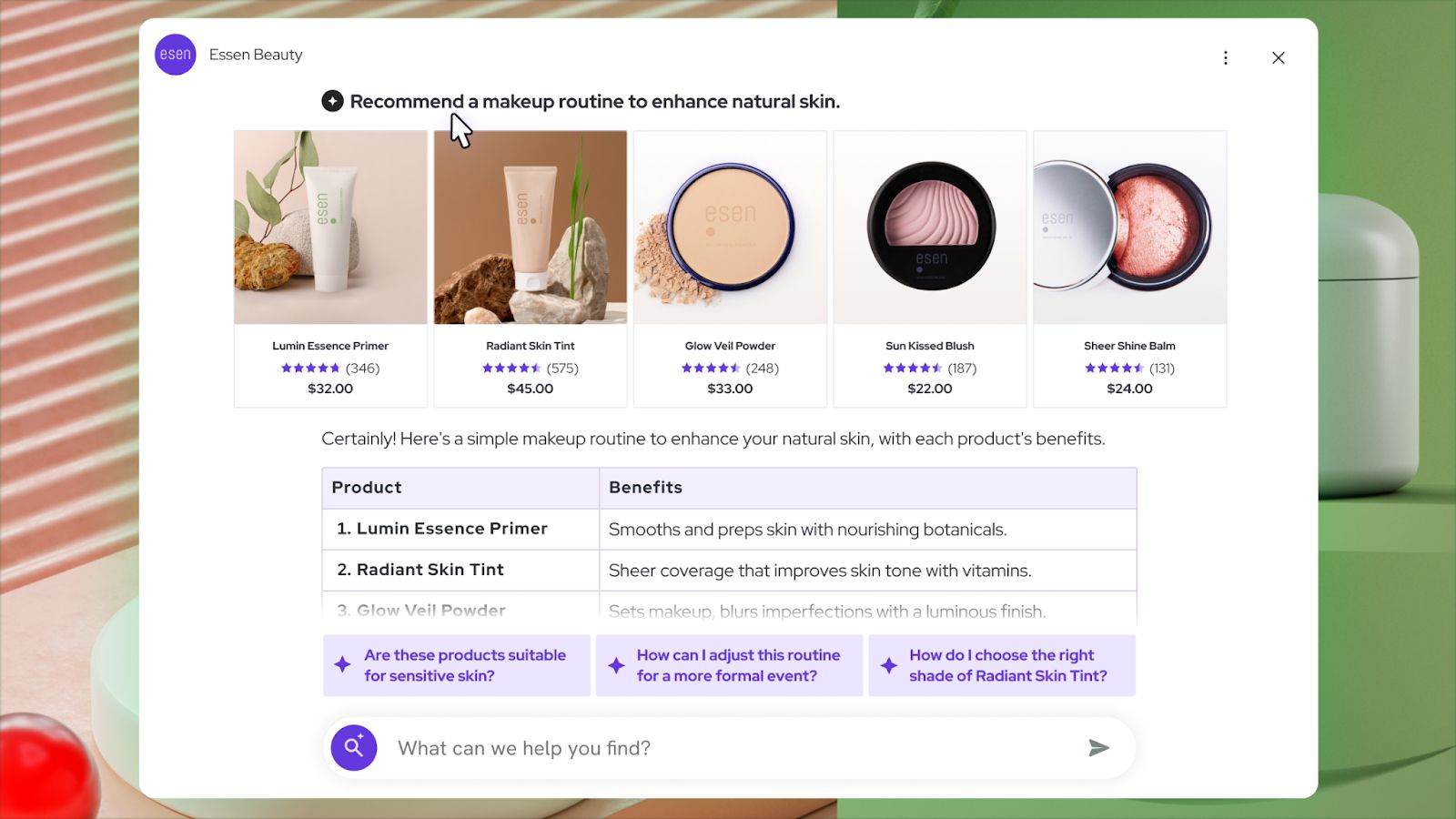
Shoppers can ask the AI-powered assistant contextual questions about your products from anywhere on your site.
The sales agent can understand user intent and converse with your customers like a human, 24/7.
Here’s an example from Rad Power Bikes when asking the AI assistant to compare two different e-bikes ⤵️
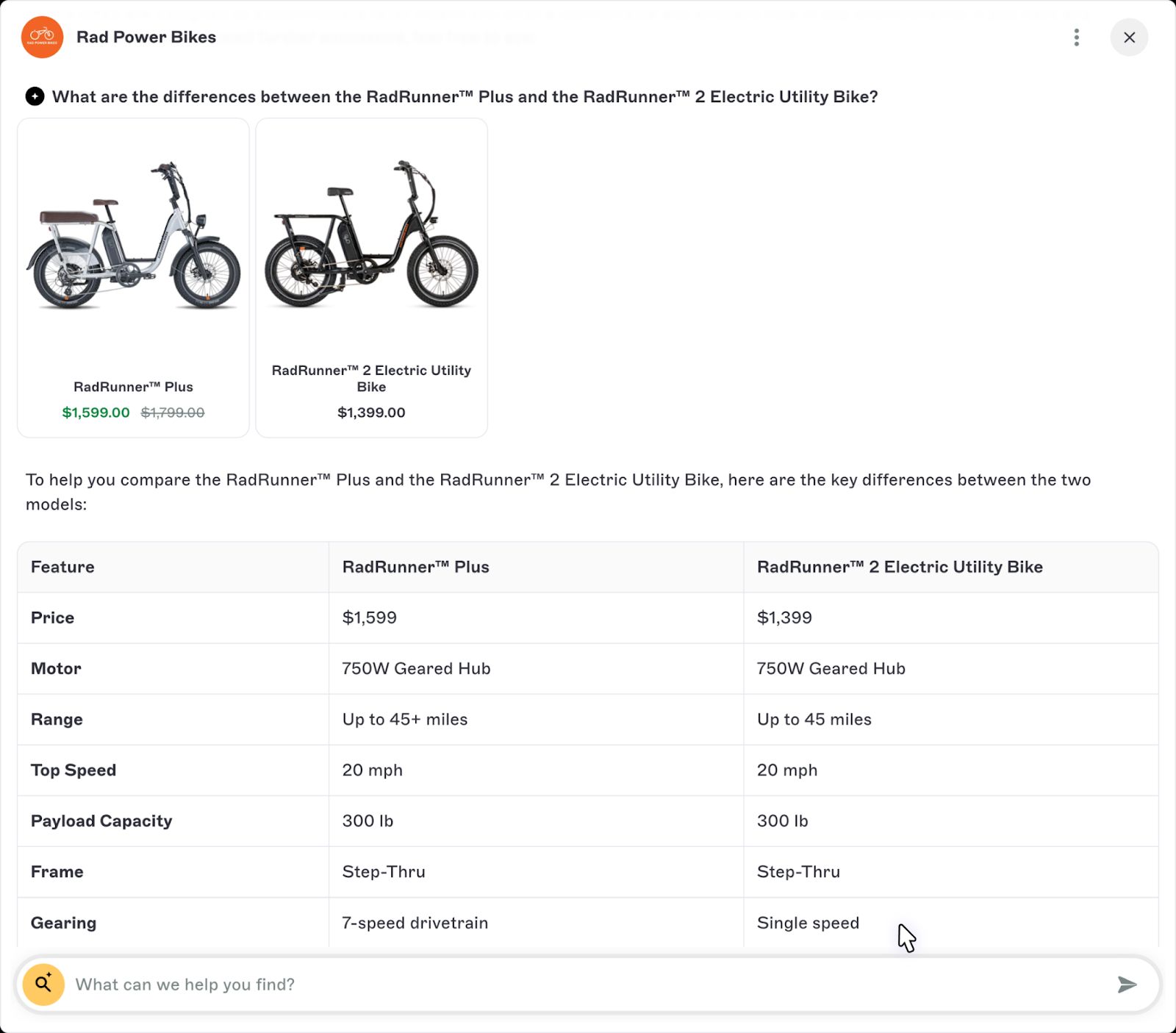
The software is trained to provide personalized answers based on the information about your products, site content, and each customer’s engagement with your store.
Here’s why online brands have been adopting Big Sur AI:
- 24/7 Real-Time Assistance: The sales agent can help your shoppers find the right product at any time without relying on human agents to be online.
- Customized to your store: You control the AI experience to ensure that the tone of voice represents your brand. The software has been fed and trained with your store’s information.
- Optimized for conversions: Our AI Sales Agent’s advice has been designed to provide relevant recommendations and propose follow-up questions based on data on what would most likely lead to conversions.
- Conversational experience: Shoppers can talk to the sales agent as if they were messaging a real human.
Here’s the AI assistant in action ⤵️
You can set up an AI assistant like Big Sur AI to provide real-time support to your shoppers to recreate the in-store shopping experience.
Results: Rad Power Bikes converts a 12% conversion rate for shoppers who converse with the AI Sales Agent.
This is four times more than their store's average conversion rate.

Your online store will also get data into the conversion rates of each question your users ask that leads to a conversion.
This will help you identify the crucial pre-purchase questions interested shoppers ask.
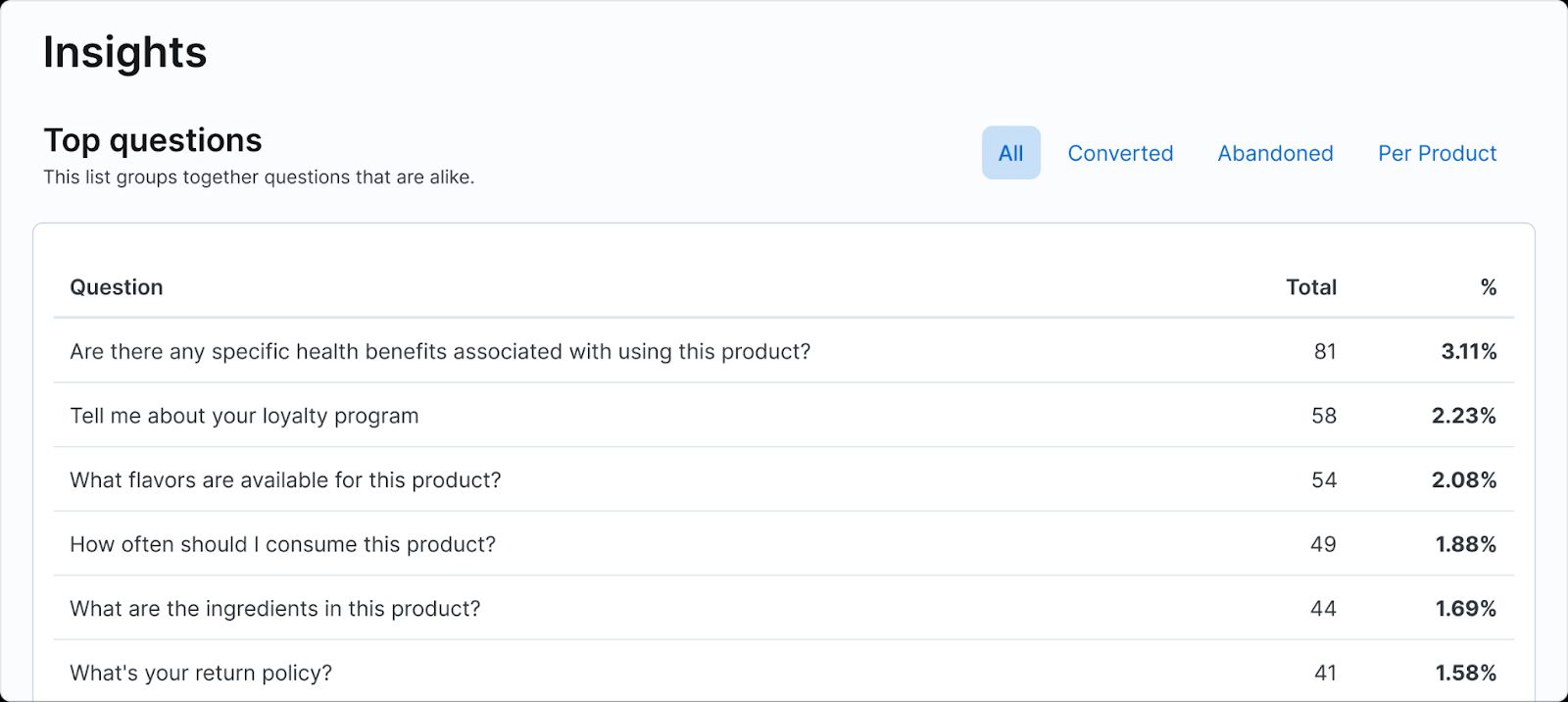
#2: Add AI-Powered Product Recommendations That Are Customized
Optimize your e-commerce store by adding personalized product recommendations to improve the customer experience.
Personalized product recommendations are customized suggestions made to your shoppers that consider the customers’:
- Product preferences.
- Browsing history (e.g., what pages they viewed on your website).
- Purchasing behavior.
The product recommendation software utilizes algorithms and predictive AI to analyze customer behavior even if your shoppers are not registered on your website.
💡 For example, Wyze has set up personalized product recommendations on their store to improve their conversion rates and basket sizes.
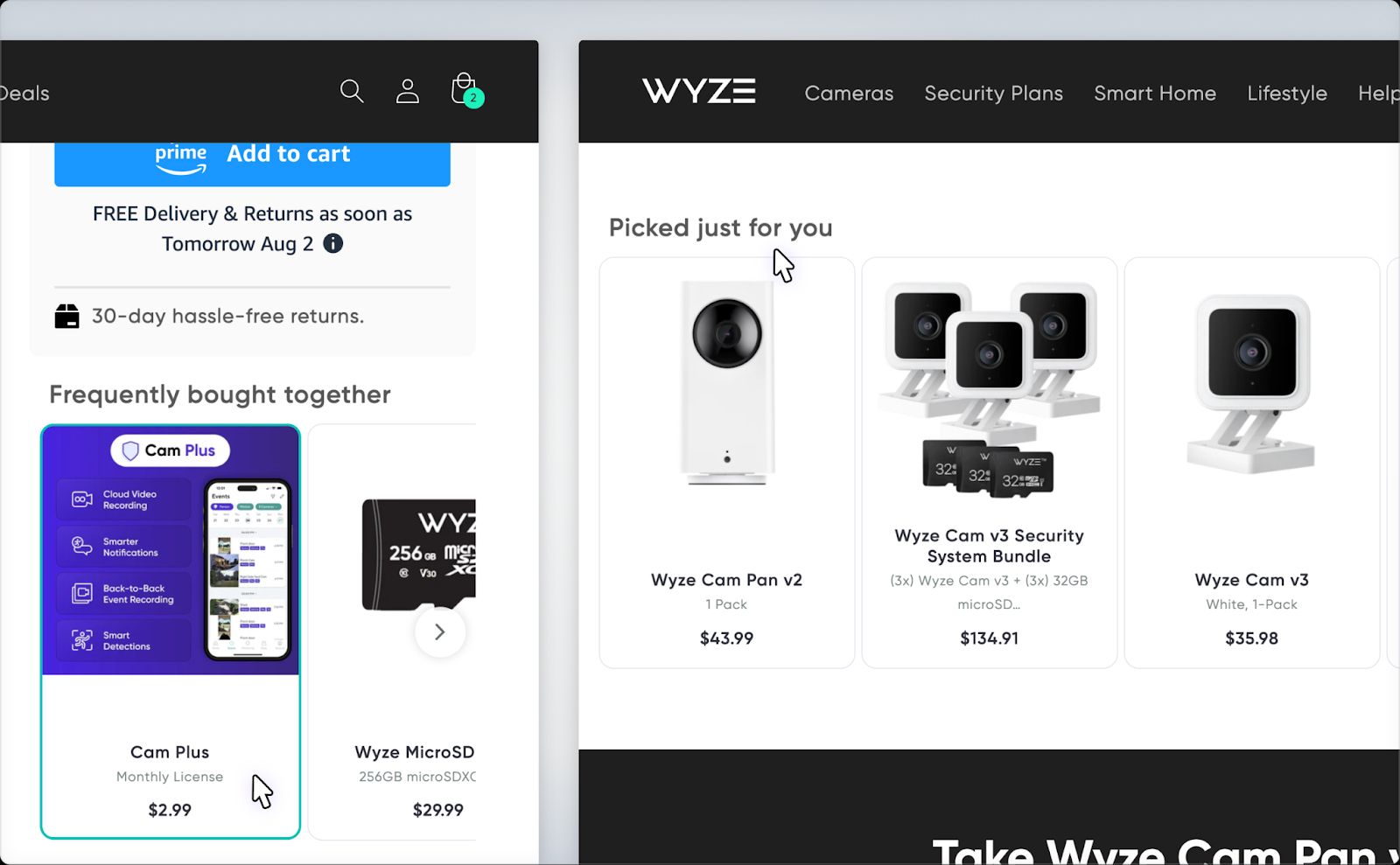
The brand utilized Big Sur AI’s Product Recommendations that can dynamically update recommendations, adapting to changing preferences and behaviors.
The recommendation engine is real-time and personalized to each shopper, ensuring that customers see the most up-to-date products based on their last interaction with your site.
➡️ Our algorithm makes contextual product recommendations based on your shoppers’ engagement with your store (e.g., transactional history) and information gathered through the conversational experience with the AI assistant.
The product recommendations are then broken into three modules:
- Picked just for you: Products that customers will most likely buy based on what the software knows about them.
- Frequently bought together: These recommendations appear once customers add a product to their cart. This module features other products that shoppers buy based on their previous activity.
- Top sellers: The bestsellers in the same product category as the product your consumers are considering.
The tool shows items based on the shoppers' gathered information rather than generic recommendations.
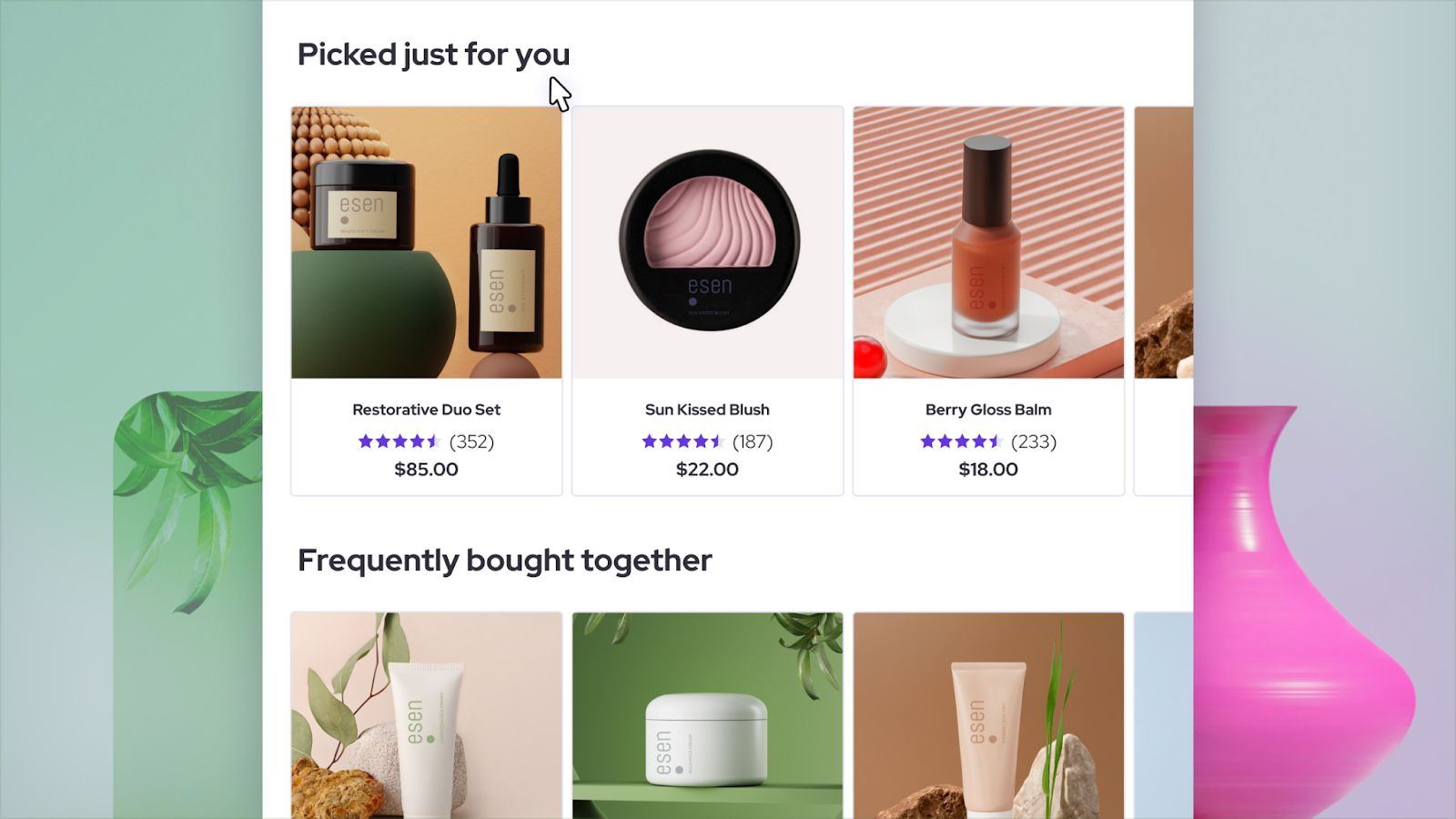
Your shoppers can receive these product suggestions on your product pages or during a conversation with the AI Sales Agent, increasing your conversion rate and basket sizes.
💡 Statistics show that product recommendations have the best return on investment as they, on average, increase the average order value by 11% & conversion rates by 26%.
Expert’s Opinion: Alex Konduforov from AltexSoft agrees that one of the main advantages of personalized recommendation systems is that they lead to higher conversion rates.
This is because because online brands assist customers in finding the perfect fit for their needs.
#3: Add a Semantic Site Search
It has been estimated that 21% of customers will leave your website if they are still looking for what they want.
This is why you must pay attention to your e-commerce site search function.
You can optimize your website by adding an AI-powered semantic site search that can understand user intent instead of just matching keywords to product titles.
Tools like Bloomreach combine customer data alongside predictive AI to suggest relevant product recommendations in its semantic search.
➡️ When shoppers are searching on your site search, the search engine recommends products based on their shopping journey and purchase behavior.
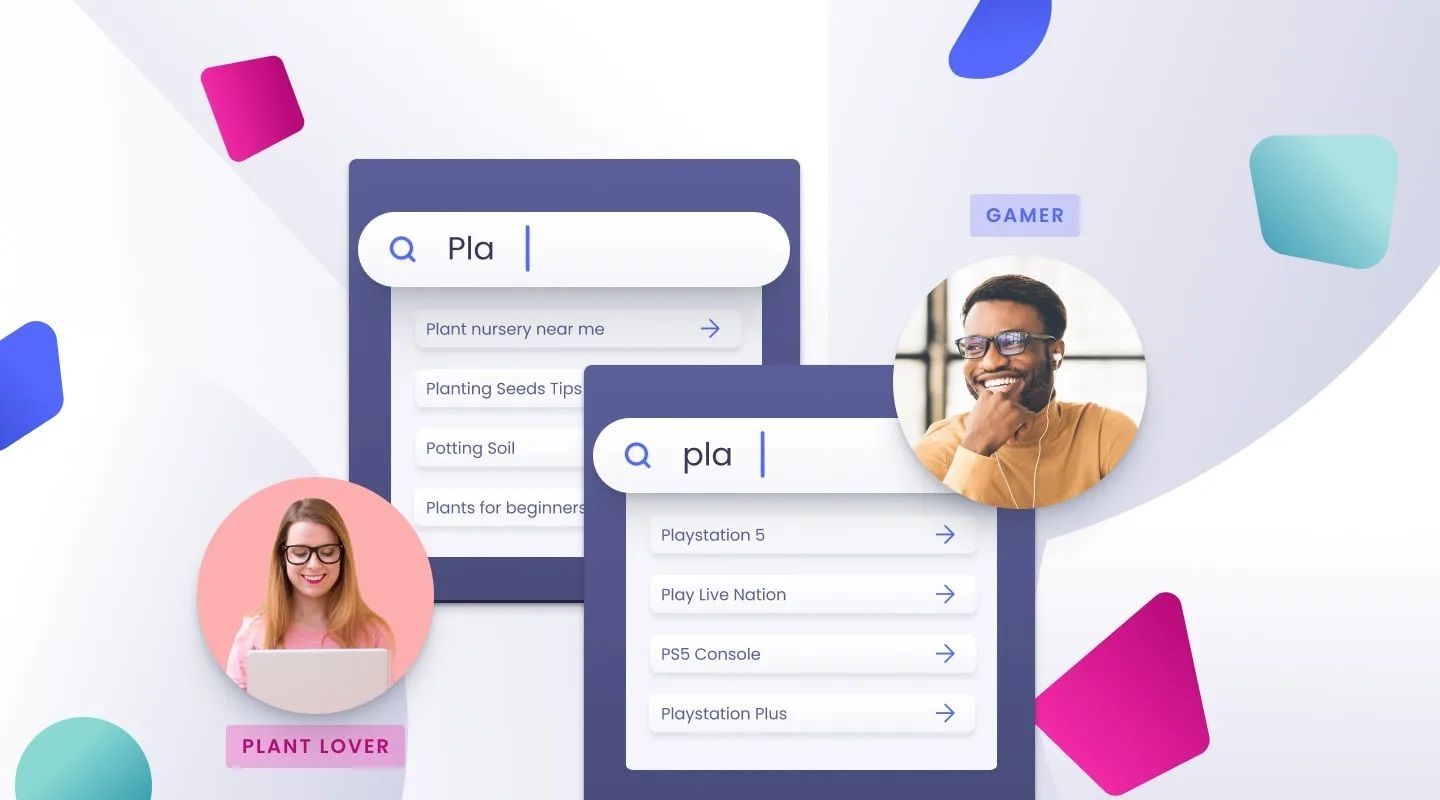
The goal is to minimize the "null" results customers get when no product is matched and optimize for non-product queries (e.g., finding the return policy).
💡The personalization technology works similarly to how product recommendations work.
For example, Sur La Table partnered with Bloomreach to level up its product discovery journey.

The online retailer offers a range of cookware and glassware products and identified that its customers struggled to find what they needed.
Sur La Table utilized Bloomreach’s Discovery to improve their product discoverability and personalization of search results.
Results: The brand saw significant improvements in key performance metrics, including:
- 7.6% increase in search average order value.
- 11.5% boost in category AOV.
- 6.6% lift in search add-to-cart (ATC) rate.
💡Statistics show that 39% of shoppers are influenced by a relevant search result.
Expert’s Opinion: Fernando Aguilar from Enterprise Knowledge notes that semantic search can provide more comprehensive and relevant results.
This is especially true when the customer’s intent may not be well-defined or when multiple meanings are possible.
#4: Set Up Smart Pop-Ups & Customized Offers
You can set up smart pop-ups with personalized offers to optimize your site’s conversion rate and minimize your bounce rates.
These AI-powered tools use your customers’ interests and on-site behavior to show targeted pop-ups with tailored offers.
There are different kinds of pop-ups, such as:
- On-page pop-ups that appear when your customers scroll down.
- Exit intent pop-ups that try to figure out when your customers are about to leave.
- Pop-ups that appear when your shoppers have been on the website for some time.
➡️ For example, Kiss My Keto decreased their cart abandonment rate by 20% by utilizing smart pop-ups.
The D2C keto lifestyle brand wanted to boost its sales by converting a higher percentage of its existing traffic.

They knew they had many cart abandoners and visitors with active coupon codes that did not convert.
This is why Kiss My Keto partnered with OptiMonk to create:
- A conversational pop-up for new homepage visitors, offering a 10% discount and a product recommendation as long as they can answer what products they are looking for.
- Discount pop-ups for product page abandoners encouraged them to purchase by offering them 15% off, and displaying the product name that the customer is browsing.
- Offer cart abandoners a limited-time discount of 15% that served as the final discount, with a countdown timer of when it ends.
- Remind visitors of their coupon codes by putting a sticky bar at the bottom of the page, to remind customers of their discount code.
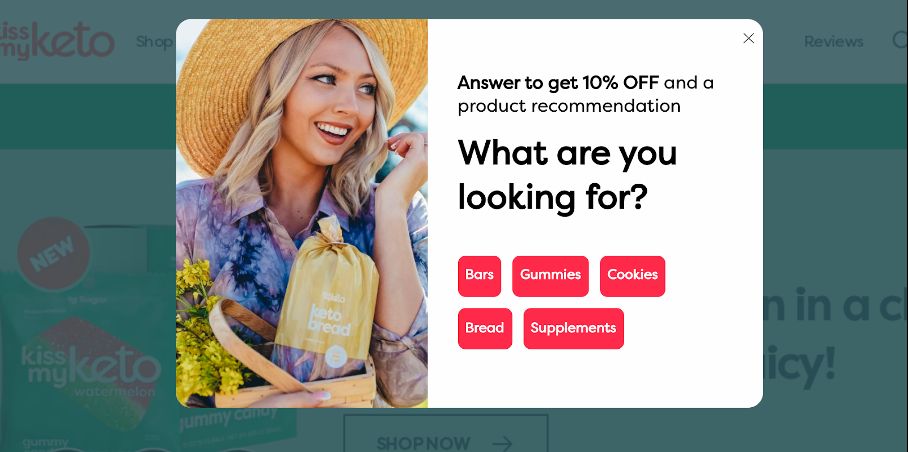
The smart pop-up campaign that yielded the greatest results was the cart abandonment campaign, with a conversion rate of 15.05%.
Final results: The brand received 3,300 new email subscribers and boosted conversions by 7.17% overall.
#5: Add a Product Quiz
E-commerce quizzes are interactive questions you show your customers to gather information about their product preferences and needs.
As you learn more about your customers from the e-commerce quizzes, you can offer them personalized product recommendations to optimize your conversion rate.
These quizzes help your brand collect first-party data on your shoppers and let you feed these insights into your product recommendation engine.
➡️ For example, The Hair Shop has set up an online quiz on their landing pages to assist their shoppers in finding the right shade for their hair.
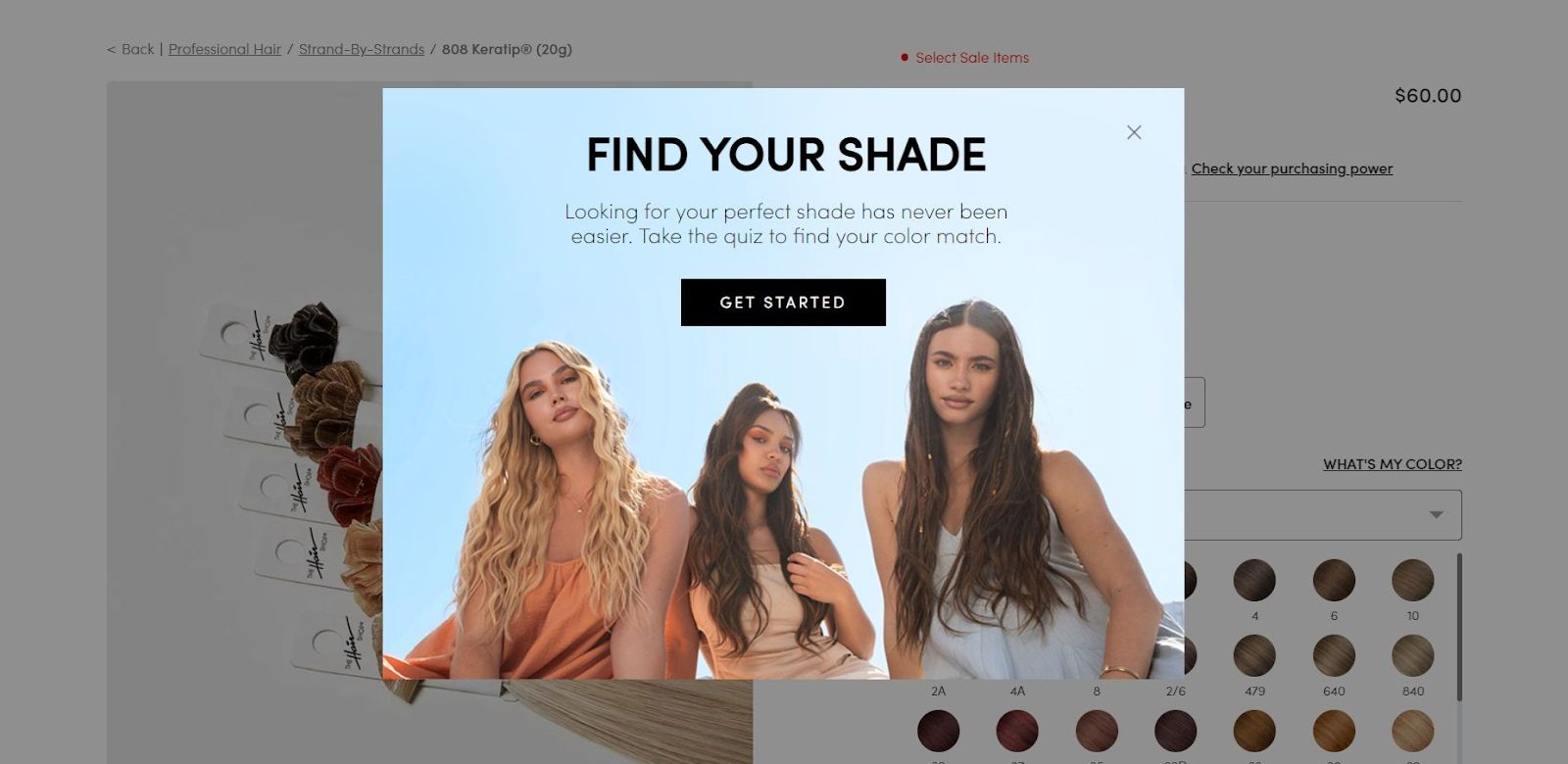
Customers must click "What’s my color" on the product pages, and a "Find your shade" pop-up will appear.
The customers are then taken to an interactive quiz that helps them find their color match.
The quiz covers questions such as what type of extensions the client is looking for, their hair type, age range, and whether the roots and ends match.
After that, the brand asks for the customer’s email address to send them the results.

The Hair Shop utilizes an online product quiz and customer information to improve its customer experience and conversion rate.
Expert’s Opinion: Gregg Forbes from Swanky believes that applying a product recommendation quiz correctly can increase sales, conversion rates, and customer trust.
The specialist warns that quizzes require a significant investment of time and resources.
How Can Personalization Enhance E-Commerce Optimization?
Personalization plays an important role in e-commerce optimization efforts by:
- Enhancing the customer experience.
- Increasing conversion rates by making tailored recommendations.
- Increasing the average order value (AOV) and basket sizes.
- Improving customer retention.
Your brand can boost customer engagement and loyalty with AI-powered product recommendations, dynamic content, and personalized offers.
➡️ Personalization can increase conversions and customer retention by customizing your brand’s message and offers to shoppers’ individual preferences and purchasing history.
💡 Personalization programs can increase customer satisfaction by up to 20% and conversion rates by up to 15%.
Let’s go over a few examples of how hyper-personalization can optimize your e-commerce store ⤵️
#1: Dynamic Content Based on Customer Behavior
You can utilize dynamic content to personalize the customer experience in real-time - across multiple channels.
Dynamic content personalization adjusts the customer experience (e.g., recommendations) based on their last interaction in real-time.
AI algorithms use behavioral targeting to offer dynamic product recommendations or targeting across advertising platforms.
The website personalization software gathers information as shoppers browse your website, analyzes their behavior, and refreshes the customer experience on the go.
➡️ For example, Adidas uses dynamic content in its re-targeting marketing campaigns to minimize cart abandonments and improve its conversion rate.
After a shopper has left a product in their cart over at Adidas and has left the website, the retailer is re-targeting them with Meta Ads on Facebook:
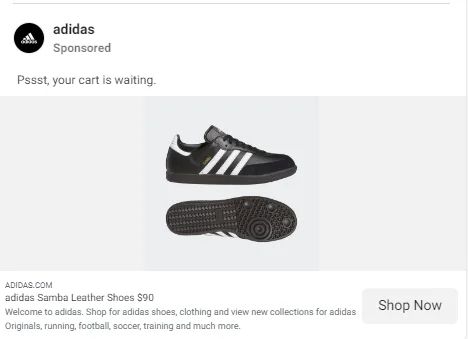
Such a re-targeting campaign lets Addidas hyper-personalize the customer experience and reduce cart abandonments.
This enables the e-commerce giant to improve its CRO metrics and to remain top-of-mind, nudging its shoppers to convert.
💡 Research from Barilliance found that setting up personalized product recommendations can improve your cart abandonment by up to 4.35%.
Software: Online retailers are utilizing tools like Big Sur AI and OptiMonk to create dynamic content based on first-party data collected in real-time.
➡️ With Big Sur AI, you can set up AI-powered product recommendations that change in real-time as the engine learns more about your customers’ product preferences.
➡️ With OptiMonk, you can set up dynamic content across multiple channels, from advertising to email, to personalize your customers’ journey.
#2: Customized Email Campaigns
You can set up personalized email campaigns that deliver relevant content to each customer.
These tailored emails segment customers based on their past behavior, preferences, and purchasing behavior to boost open rates, click-through rates, and revenue per subscriber.
With AI-powered customer segmentation, you don’t need to do all the manual work of segmenting campaigns, as it is automatically done.
Software: Marketing tools like Klaviyo enable your brand to set up personalized email campaigns based on customer behavior, such as abandoned cart reminders and win-back campaigns.
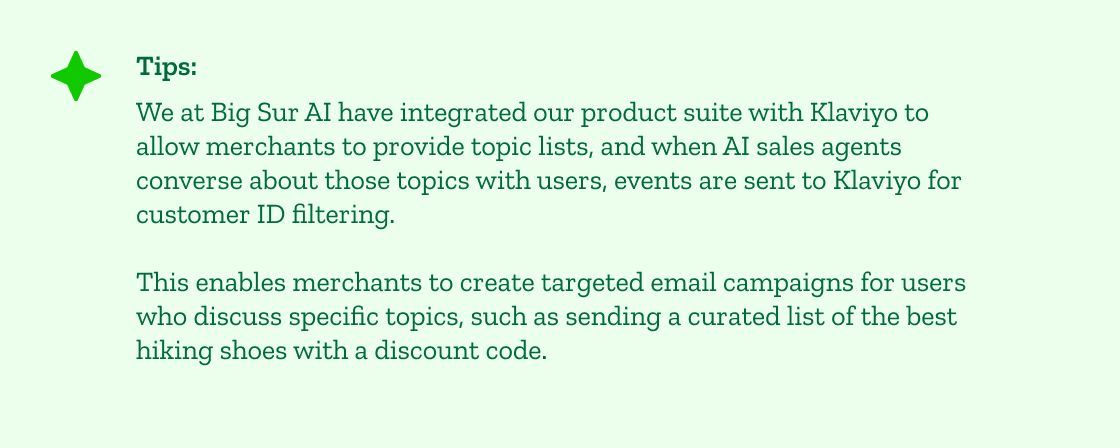
➡️ For example, the sports brand Ruroc grew its email revenue by 80% through personalization.

The brand personalized the customer experience by tailoring their emails to what their customers cared about the most.
To ensure only relevant messaging, Ruroc tagged each customer profile with the product line (e.g., motorcycle) in which the shopper was interested.
After that, the brand set up automated email journeys based on customer behavior (e.g., cart abandonment).
Result: Ruroc now drives 38% of its revenue through email marketing.
#3: Personalizing The Home Page Experience
You can hyper-personalize your site’s product discovery experience by customizing your home page to each shopper.
➡️ AI technology uses first-party data, such as items bought so far, to offer tailored product recommendations on the home page.
Your brand can also personalize the experience of first-time visitors by accessing third-party data on product preferences and interests.
With such hyper-personalization, your online store can attract and retain customers by improving their product discovery experience.
Software: You can use tools like VWO to personalize the home page for each shopper.
The software captures data from anywhere to understand every visitor.
VWO pulls data from browser-based properties, web engagement, or browsing behavior data to personalize each user's shopping experience.

💡 Amazon is an example of an online brand implementing personalized home pages to offer customized product recommendations.
The e-commerce giant shows each shopper custom home pages based on their product preferences and products bought so far.
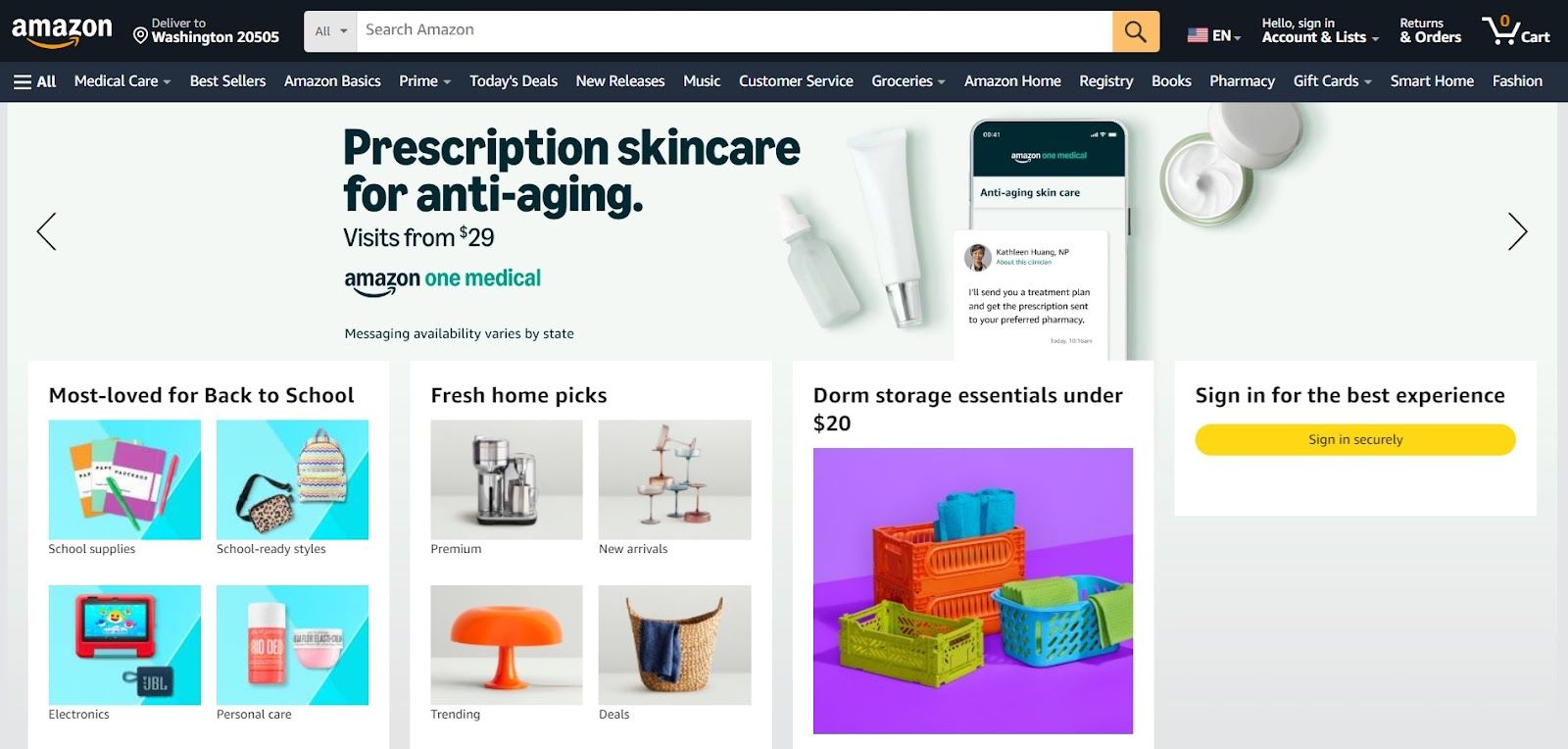
Results The company has reported that 35% of its sales come from personalized recommendations.
Amazon also estimates that nearly 56% of the customers who received tailored recommendations will likely become repeat buyers.
What Are The Best Website Optimization Tools For Online Stores?
Now that we have discussed ideas for optimizing your e-commerce store to improve your conversion rate and customer satisfaction, you can check our buyer guide on the best website optimization software in 2024.
We review seven e-commerce optimization software, reviewing their use cases, pros and cons, and pricing models.
Optimize Your Online Store With Big Sur AI
Optimize your online store with a conversational experience that works 24/7 to assist your customers.
Our AI-powered Sales Agent can personalize your customers' shopping journey with an AI sales agent and personalized product recommendations.
💡 The software also prompts shoppers to start more conversations, leading to more purchases and increased basket sizes.
Big Sur AI analyzes how each customer engages with your store, predicts which questions they will likely ask, and suggests them throughout their product discovery experience.
Here’s an example from Wyze ⤵️
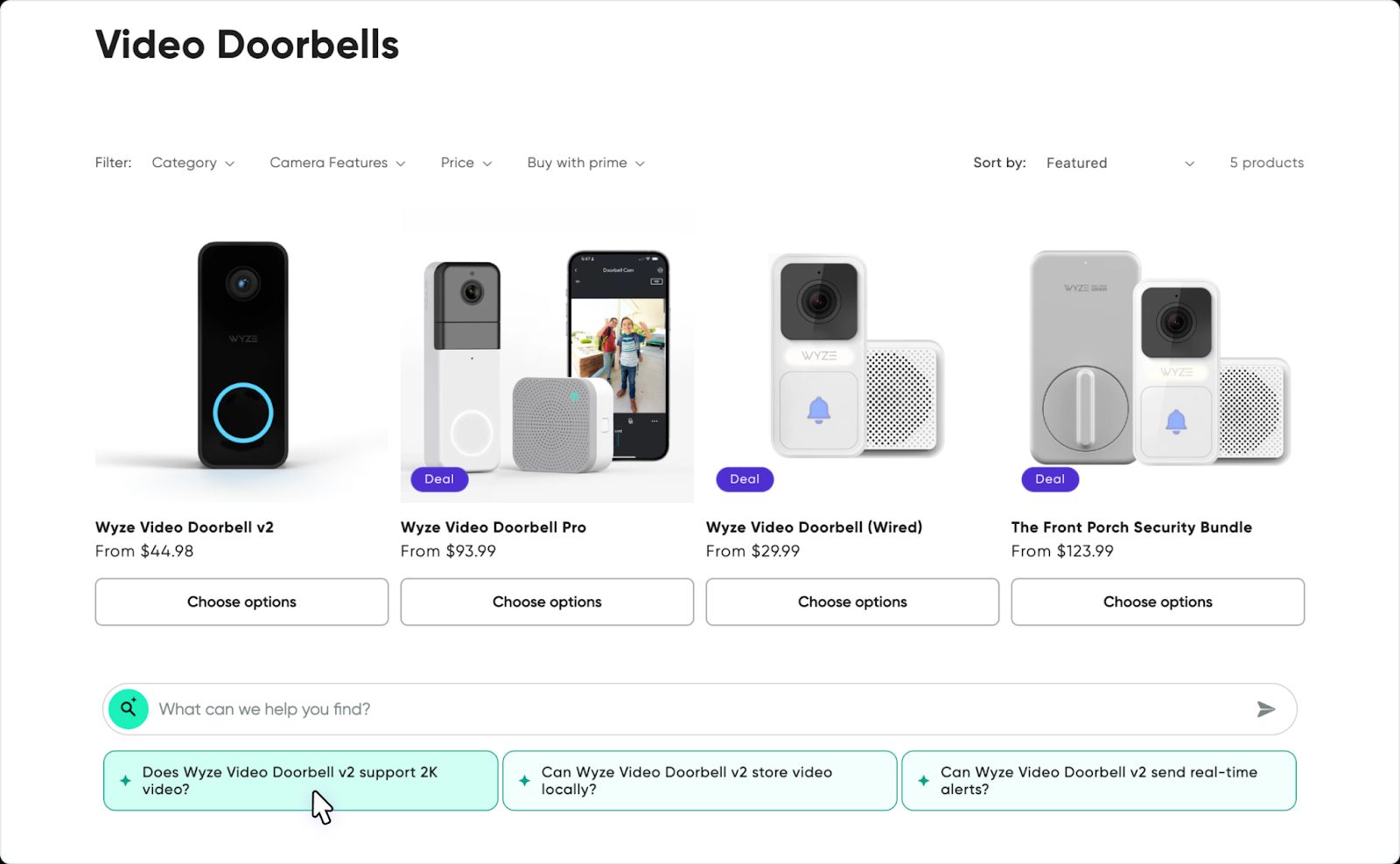
You will also get insights into the conversion rates of each question your shoppers ask that leads to a conversion.
This will help your brand identify the crucial pre-purchase questions that interested customers ask.

You also gain insights into what products are frequently bought together, which can help you improve your store’s shopping experience.
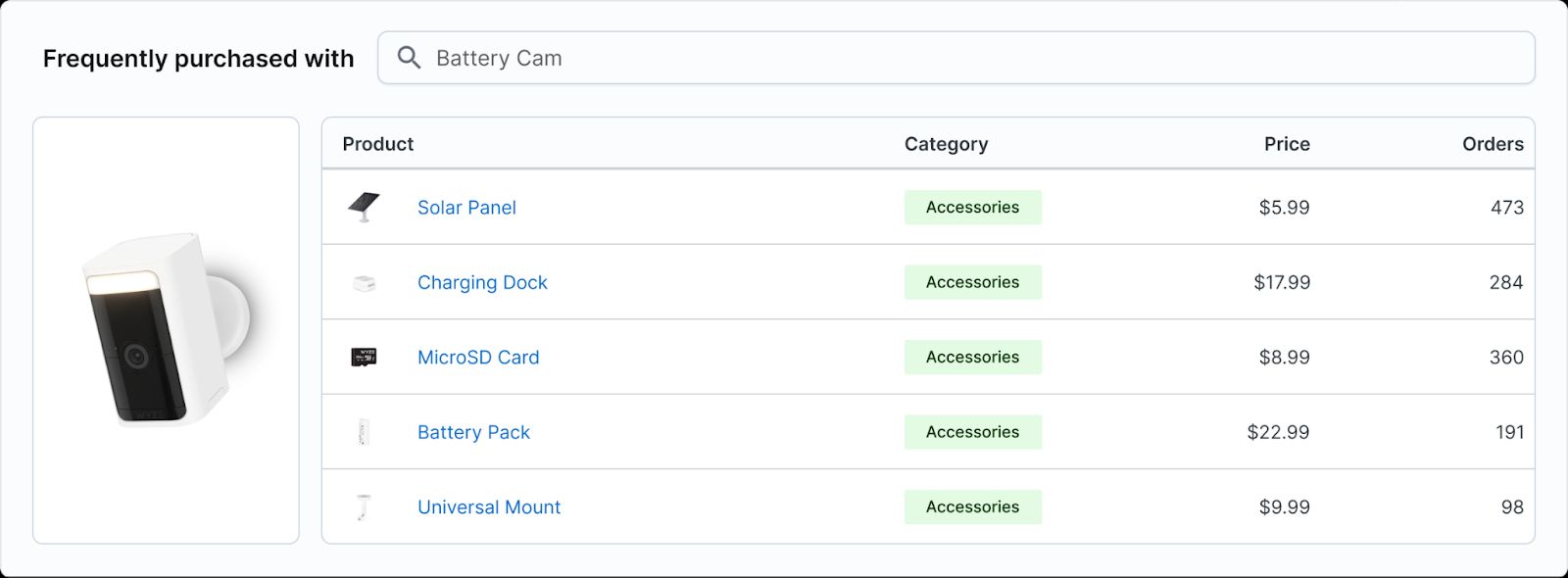
Be data-driven about what products are commonly bought together and what pre-purchase questions customers have on your website.


